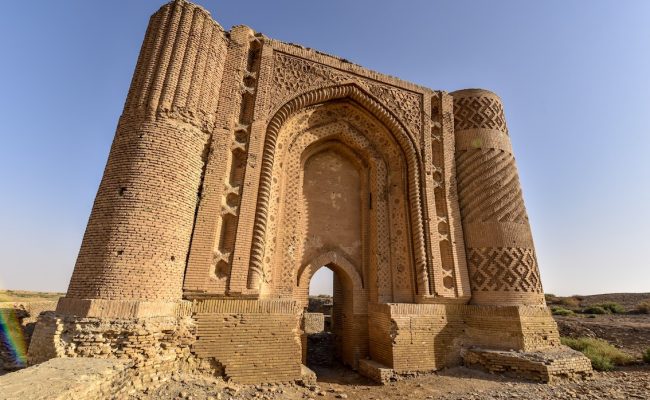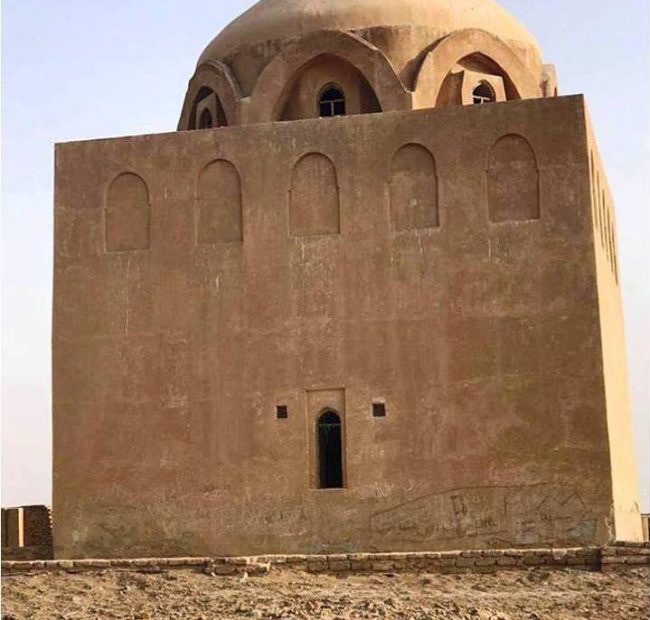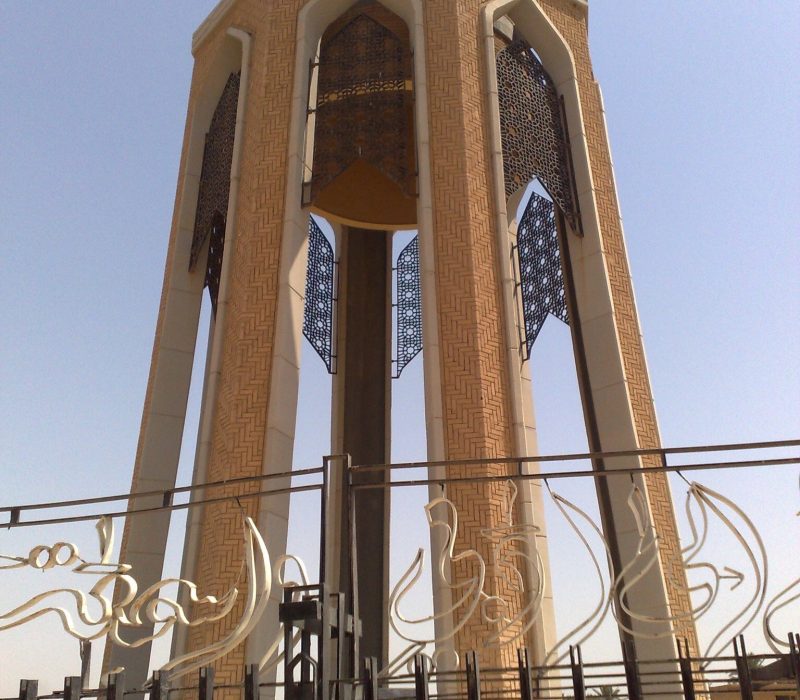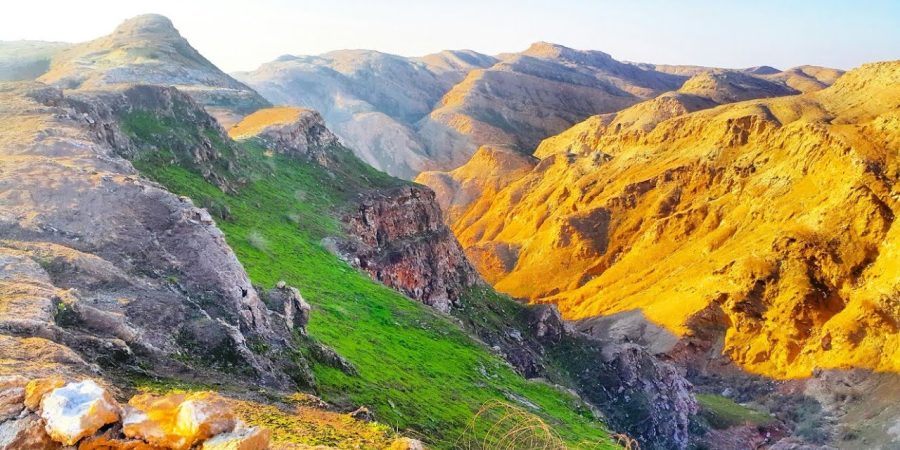Discovering Wasit Governorate - History and Key Monuments
Wasit Governorate is located 180 km southeast of the capital, Baghdad. The ruins of the city of Wasit, which was built by the Arabs in the Umayyad period, are located 65 km from the city of Kut, the center of Wasit Governorate. It became famous for its vital location and its founder is Al-Hajjaj bin Yusuf Al-Thaqafi, worker of the Caliph Abdul-Malik bin Marwan around the year 83 AH.
The construction of the city took three years from 83-86 AH and its establishment cost the whole Iraqi levies for five consecutive years, i.e. about 43 million dirhams, and its ruler thought that it was good idea to take it as a seat of wisdom and to make it a palace in order to secure control, supervision and ease of military movement to Basra and Kufa, as the city was built between these two cities and that is why it was called Wasit.
Among the most prominent monuments in the city:
Al-Manara - A Historic Landmark of Al-Sharabiya School in Ancient Wasit
Which rises about 11 meters and is in the eastern part of the city and represents the remains of the gate of Al-Sharabiya School in Wasit. Al-Sharabiya School is one of the oldest academic schools in Iraq. It is located in the ancient city of Wasit, in Al-Hay neighborhood, where the palace and the mosque are. It is the last remnant of the ruins of the city of Wasit, and is one of three schools that were built during the time of Caliph al-Mustansir, as the first was built in Baghdad, the second in city, and the third in Mecca by Sharaf al-Din Iqbal al-Sharabi in the year 632 AH, that is, after a long period of building the city of Wasit by Al-Hajaj who died in the city in the year 95 AH.


Historical Significance of Athar Al-Najmi - The Al-Najmi Palace and Mosque in Wasit Governorate, Iraq
The site is located in the city Governorate, roughly 23 kilometers to the northwest of the city of Numaniyah. The names of these locations are derived from the various stories, myths, and local legends that have been passed down by the residents of the region and the surrounding areas for many generations. According to these traditional accounts, Al-Najmi is a mosque believed to have been constructed at the very end of the Abbasid era in Iraq.
While the exact year or date of its construction is not known, it is widely accepted that it was built sometime during the Abbasid period. In the central area of the palace, two tombs can be found. One of these tombs bears an inscription in Arabic, which states that it is the burial place of the renowned scholar Al-Jabali. The tomb located next to it is believed to be that of his wife, adding a layer of historical significance to the site, making it an important and revered location for those interested in the history and culture of the region.
Al-Mutanabbi Shrine - Honoring the Legendary Arab Poet in Iraq
He is Abu al-Tayyib Ahmad Husayn al-Ja’fi, more widely known as al-Mutanabbi, born in 915 AD and tragically passing away in 965 AD. Al-Mutanabbi is widely regarded as a deeply wise and influential poet and stands as one of the greatest figures in Arab poetry. He was born and raised in the city of Kufa and spent much of his life traveling to various Arab and Islamic countries and cities. His journey, however, came to a tragic end when he and his son Mehsad were killed by a bandit named Fatek Al-Asadi. They were buried in Numaniyah.
Al-Mutanabbi’s tomb is located approximately 3 kilometers north of the Numaniyah Junction in Wasit Governorate, Iraq. The original tomb was constructed in the 1930s using mud, built by Hamoudi Al-Shakour, a prominent figure from the region. Later, in the late 1940s, international committees conducted studies on the remains to confirm whether they indeed belonged to the famous poet. After confirmation, a new and more permanent structure was erected on the site in the year 2000 AD.


Exploring Zurbatiya - A Scenic Border Crossing Between Iraq and Iran
Zurbatiya is a district in Iraq, located in city Governorate, and serves as a border crossing point with Iran. The name “Zurbatiya” translates to “pot of gold,” which is a fitting name for this city, as it is a popular tourist destination. The city is known for its stunning natural beauty, with picturesque landscapes that feature natural water springs nestled between the hills and rocky mountains of the Zagros mountain range. The combination of these breathtaking views makes Zurbatiya a unique and enchanting place to visit.
Comprehensive Frequently Asked Questions for Traveling to Wasit - Key Information for Your Trip
Located in southeastern Iraq, is generally considered safe for tourists traveling with a guided tour. With proper planning and local guidance from World Gate, you can explore the region confidently. Always check current travel advisories before your trip.
Yes, travelers to Iraq, including Wasit, require an entry visa. World Gate offers assistance in obtaining the necessary entry visas for a smooth travel experience.
This city is known for its rich history, including the ancient ruins of Sumerian civilization. Popular sites include the ruins of the ancient city of Uruk, local markets, and the scenic Mesopotamian landscape.
The best time to visit Wasit is during the cooler months from October to April. Summer temperatures can be extremely hot, so visiting during spring or fall will make for a more comfortable trip.
World Gate offers fully tailored travel packages to Wasit, including guided tours, visa assistance, accommodation, and transportation. Our expert team ensures that your trip is seamless and enjoyable.
Accommodation in Wasit is available in various forms, ranging from budget hotels to more comfortable guesthouses. World Gate partners with reliable local providers to ensure your stay meets your needs and expectations.
While independent travel is possible, it’s recommended to book a guided tour with World Gate for a safer and more enriching experience. Our expert guides provide in-depth knowledge of local culture, history, and attractions.
Wasit offers a variety of traditional Iraqi dishes, including kebabs, stews, and rice-based meals. World Gate ensures that you get to experience authentic local food through curated dining experiences during your trip.
Arabic is the official language spoken in Wasit, though English may be understood in some areas. World Gate’s guides speak English and Arabic, ensuring smooth communication during your tour.
World Gate works with local security and guides to ensure the safety of all travelers. We provide comprehensive pre-trip briefings and offer 24/7 support during your stay to ensure a safe and enjoyable experience in Wasit.
